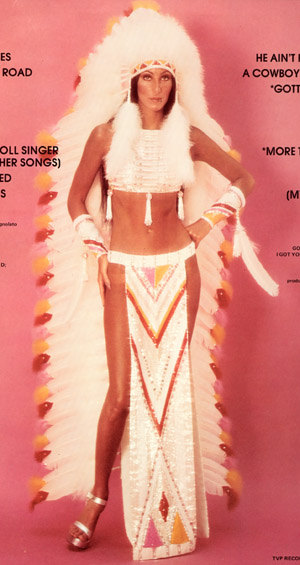Callaloo
Join Callaloo for their 2011 Scotiabank Caribbean Carnival Toronto presentation of “Caribbean Natives.”

One slight problem: This year's theme was originally "Native Americas," not "Caribbean Natives." But we'll get to that.
The page header shows an Amazon Indian in mask-like paint, a hut, palm trees, and a tomahawk and arrow. I think you can see where this is going.
How does Callaloo "honor" Native people? With scantily-clad women pretending to be Indians, of course:
2011 Costumes
For example:

Brazilian Amerindians

Tribal Princesses

Lost City of the Aztecs
This image's former title was "Sacrificial Mayan Virgins," as you can tell from the image's URL. That tells you all you need to know about Callaloo's exploitation of Native women. They might as well name it "Sex/Rape Fantasy Objects to Boost Callaloo's Bank Account."
What's wrong with Callaloo
In Callaloo Parade and the Sexualization of Native American Women, the Beyond Buckskin blog presents another image from this year's Callaloo:

And explains why this is wrong. It quotes Adrienne Keene from her Native Appropriations blog:
Nudie Neon Indians and the Sexualization of Native Women
Now can you see why my heart breaks and I feel sick every time I see an image of a naked or scantily clad woman in a headdress? This is not just about cultural appropriation. This is about a serious, scary, and continuing legacy of violence against women in Indian Country. These girls probably thought they were just being "counter-culture" or "edgy," but by perpetuating the stereotypes of Native women as sexual objects, they are aiding and continuing the cycle of violence.
Originally Callaloo meant to stereotype Natives throughout the Americas as belonging to one primitive culture of scantily-clad savages. Limiting it to "Caribbean Natives"--which stupidly includes Central and South America--isn't much of an improvement.
For more on the Indian princess stereotype, see "Racism, Stereotypes, and the Digitized Indian" and Redbone Told to Wear Buckskin.
Below: Wrong then, wrong now.


No comments:
Post a Comment